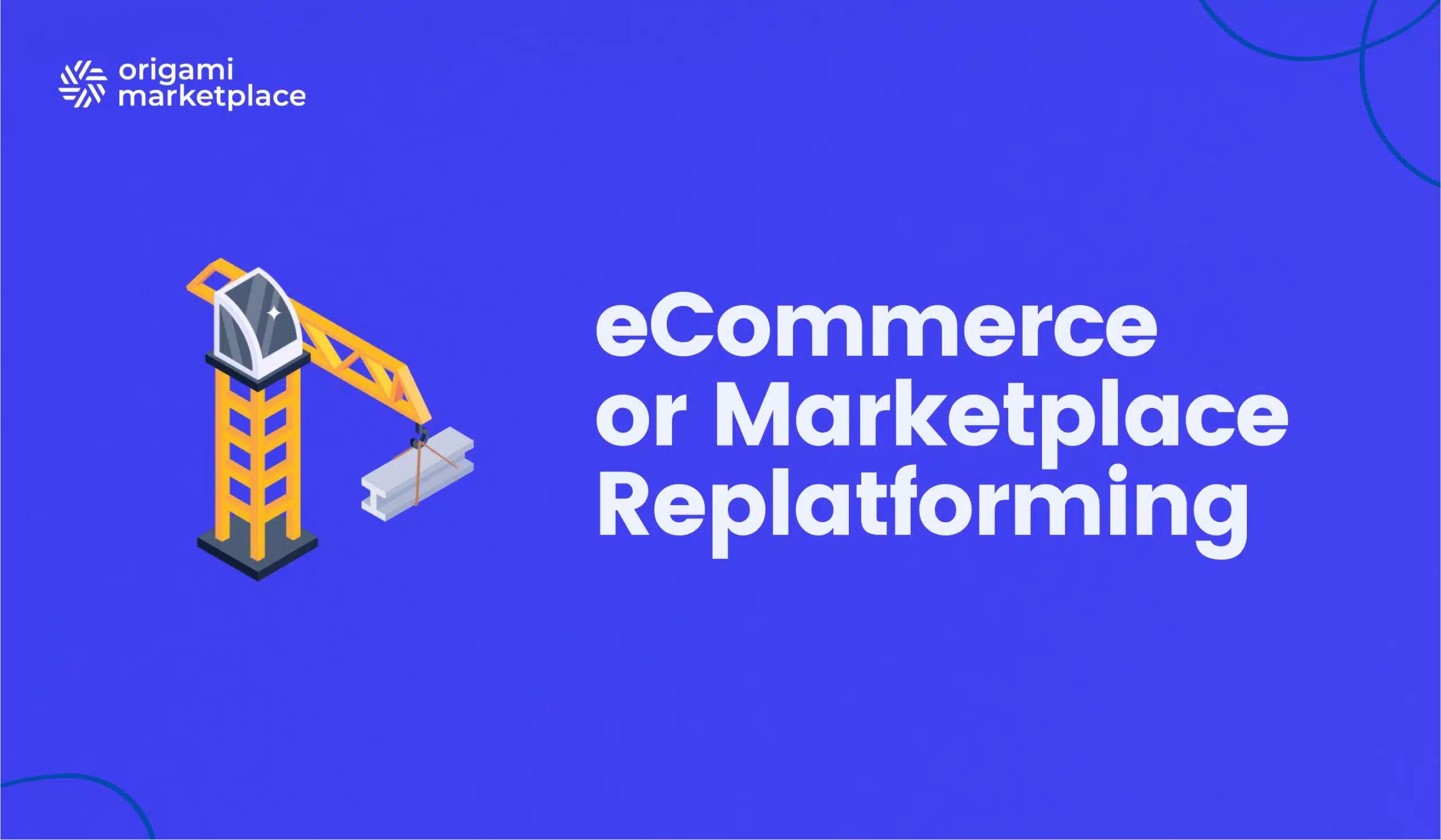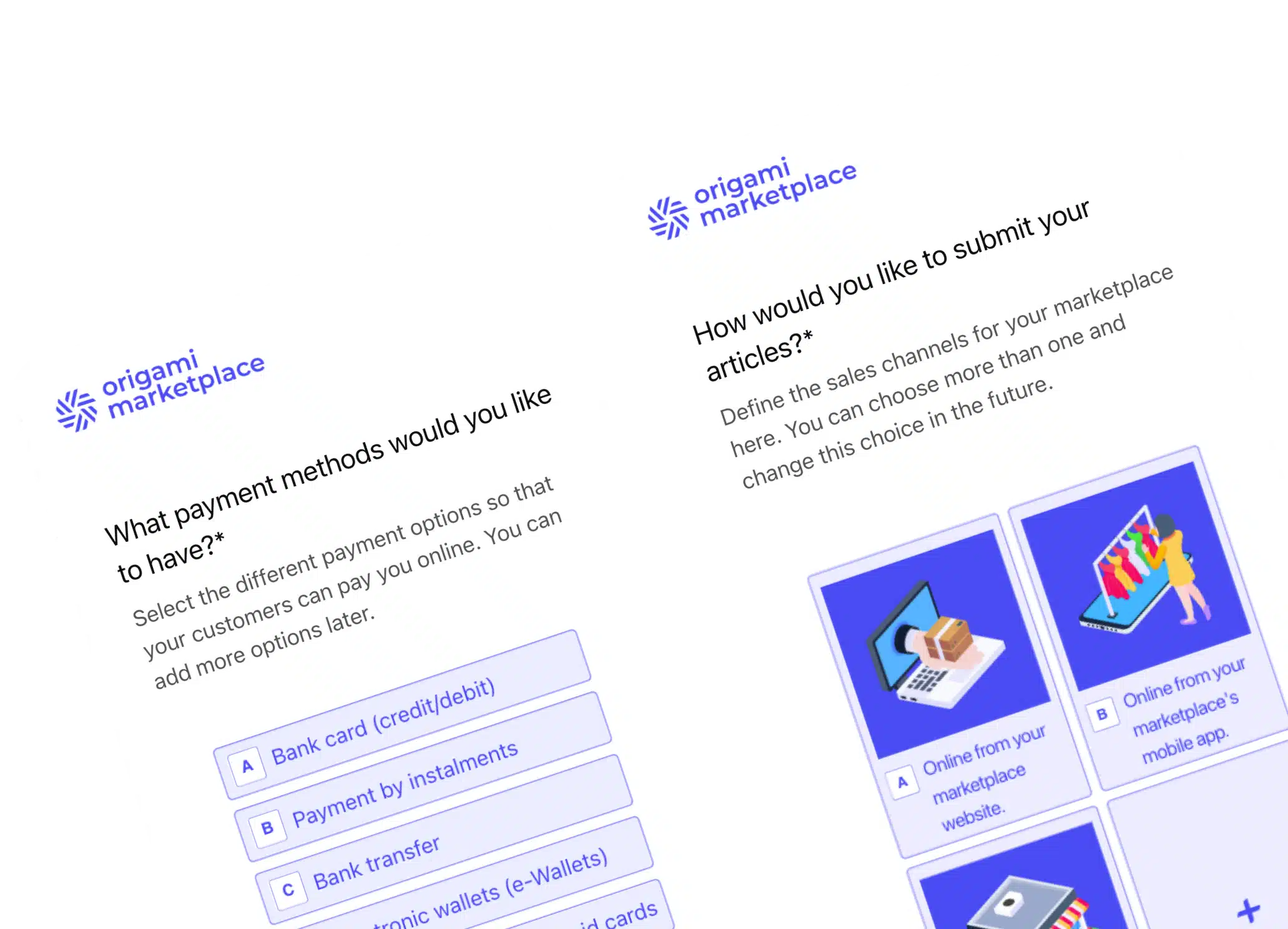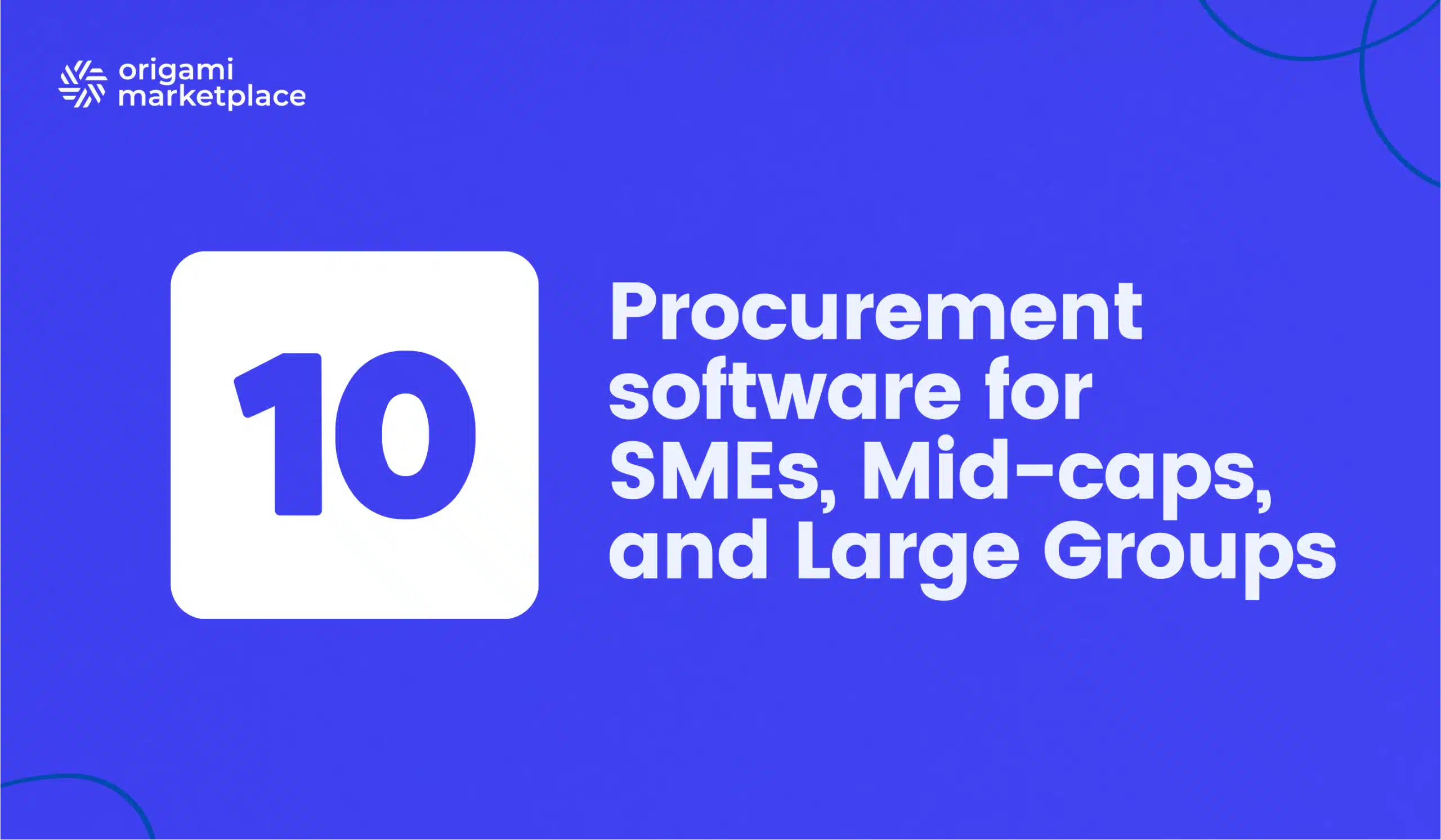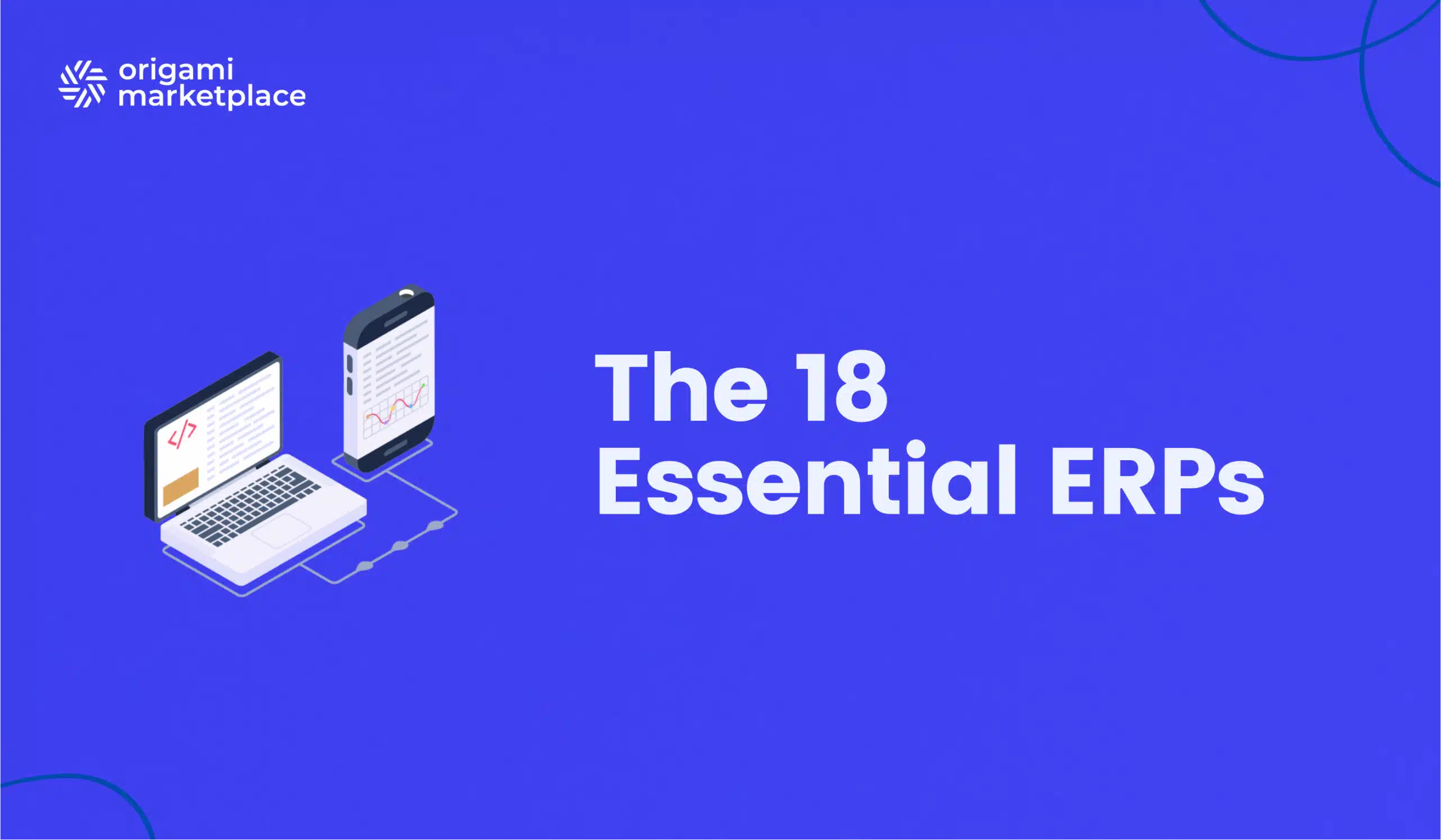eCommerce or Marketplace Replatforming 🏗️
- Arnaud
- 9 minute read

At first glance, the term eCommerce replatforming might suggest a simple visual or technical update. However, this operation goes much deeper. It’s a profound transformation, often strategic, technical, human, and organizational. Many companies underestimate this complexity, and nearly 60% of eCommerce replatforming projects experience significant delays or fail due to lack of expertise or adequate preparation. Let’s discover together the key steps to follow, pitfalls to avoid, and why a specialized partner like Origami Marketplace is essential.
- What is replatforming?
- Key challenges behind eCommerce replatforming
- Why and when should you replatform your eCommerce?
- What are the different types of replatforming?
- Why adopt a marketplace model during your replatforming?
- Make or Buy: Should you insourcing or outsource your project?
- Key phases of a replatforming project: from specifications to launch
- How to choose the right service provider or agency for your replatforming?
- Origami Marketplace: Your ideal partner for successful replatforming
👋 No time to read the whole article? Find the article summary here.
1. What is replatforming?
eCommerce replatforming involves deeply modifying or replacing the technological platform of an online store or marketplace. It’s not just an aesthetic or visual upgrade; rather, it’s a complete or partial overhaul of the technical, functional, and sometimes strategic foundations of your website.
The process typically includes:
- Migration to a new technology platform (CMS, SaaS solutions, composable architecture).
- Adding essential new features.
- Improving user experience (UX/UI) to boost conversion rates.
- Significant organizational and operational impacts, requiring rigorous change management within teams.
Replatforming aims to meet evolving business needs, enhance overall performance, ensure scalability, and often adopt innovative business models (like marketplaces).
2. Key challenges behind eCommerce replatforming
Replatforming directly impacts your core digital business activities, involving strategic choices beyond simple graphic updates. Key challenges include:
A. Maintaining or improving your SEO
Natural referencing (SEO) is a strategic pillar of your online activity. A poorly prepared replatforming can result in a sharp drop in organic traffic due to URL changes, lost optimized content, or poor technical management (redirects, loading times, mobile-first). Conversely, well-prepared replatforming is a major opportunity to significantly enhance your visibility on Google.
B. Increasing conversion rate and customer experience
Replatforming is a powerful lever for improving UX/UI, removing purchase obstacles, simplifying buying journeys, and thereby increasing conversion rates. By optimizing navigation, ergonomics, and adding user-friendly functionalities (easy payments, intuitive search, personalization), you directly stimulate sales.
C. Optimizing technical performance and site speed
Technical performance directly impacts both user experience and SEO rankings. Fast page loading is essential for Google positioning and strongly influences bounce rates.
D. Anticipating and managing human and organizational impacts
One frequently underestimated aspect is human impact. Sudden or poorly planned changes can cause internal stress, anxiety, and demotivation, highlighting the strategic importance of rigorous change management.
Ready to turn your B2B, B2C, or C2C marketplace vision into reality?
To help you develop the best platform possible, we’ve gathered all the must-have features, key technical considerations, and best practices in a comprehensive document:
Download the Specifications template 🗒
Perfect for smaller or medium-scale projects without a formal purchasing process. It will help you outline your requirements effectively and streamline your selection process.
Download the Request for Proposal template 📒
Ideal for larger, more complex marketplace projects with a formal purchasing department or advanced procurement policies.
3. Why and when should you replatform your eCommerce?
The decision to replatform your eCommerce site or marketplace must be driven by concrete, clearly identified, and strategically relevant needs:
A. Your technology is reaching its limits (performance, security)
Your current platform may gradually show signs of weakness, such as excessively long loading times, frequent downtime, or difficulties handling traffic peaks during critical periods like Black Friday or sales events. Similarly, repeated security breaches or increased risks of cyberattacks often indicate an outdated infrastructure. In these situations, a technological redesign significantly enhances the security, performance, and reliability of your platform, providing an improved user experience and protecting your brand reputation.
B. You want to diversify, expand your product catalog, or integrate new vendors
As consumer expectations continuously evolve, your business must regularly enhance its offerings to remain attractive or conquer new markets. Whether you simply wish to add new products, expand existing ranges, or adopt a marketplace model to accelerate growth without increasing your stock investment, a redesign becomes essential. Effectively integrating these changes requires an agile, modular platform capable of quickly accommodating new products, categories, and third-party vendors. This technological transformation also streamlines hybrid inventory management (internal and external) and the complex orchestration of orders. Ultimately, a suitable redesign significantly expands your commercial potential by enabling you to respond swiftly to emerging market opportunities.
C. You must comply with regulatory requirements (GDPR, PSD2)
Regulatory compliance is a critical issue often overlooked. Regulations such as GDPR (personal data protection) or PSD2 (payment security) impose strict technical and organizational requirements. If your current solution struggles to adapt to these changes, a redesign is imperative. It ensures the sustainability of your business by drastically reducing legal and financial risks associated with non-compliance.
4. What are the different types of replatforming?
Replatforming an eCommerce website or marketplace can take various forms, depending on strategic objectives, technical constraints, or user expectations. Below are the primary types of replatforming you can consider, which may also be combined according to your needs:
A. UX/UI (graphic) replatforming
UX/UI replatforming mainly targets user experience (UX) and user interface (UI). It aims to visually modernize your site, simplify navigation, and optimize ergonomics to deliver a smoother, more intuitive, and attractive experience for visitors. This type of replatforming usually involves:
- Conducting an in-depth UX/UI audit of current user journeys.
- Developing mockups and prototypes tailored to new consumer expectations.
- User testing to validate the effectiveness of new designs before deployment.
- Adopting a “mobile-first” approach to ensure optimal experience across all devices (smartphones, tablets, desktops).
B. Technical replatforming
Technical replatforming refers to a complete or partial migration to a new technological platform. It becomes essential when your existing infrastructure reaches its limits in performance, security, or scalability. This type of replatforming may include:
- Migrating to a more efficient eCommerce solution.
- Integrating modern APIs for easier connectivity with external services (payments, inventory management, CRM, etc.).
- Optimizing technical performance (loading speed, stability, reliability during traffic peaks).
- Significantly enhancing security (GDPR compliance, cyberattack prevention).
C. Functional and strategic replatforming
Functional and strategic replatforming involves enriching your eCommerce or marketplace platform with key new functionalities or integrating innovative business models, such as:
- Adopting a marketplace model allowing third-party seller integration.
- Adding advanced functionalities, such as deep personalization of customer experience, integration of marketing automation tools, or artificial intelligence solutions for personalized product recommendations.
- Incorporating alternative sales methods, like subscriptions, rentals, second-hand sales, or group buying.
- Implementing advanced omnichannel management to unify all customer touchpoints (physical and digital).
These three types of replatforming are often complementary and can be combined according to your specific needs. Clearly identifying your primary goal will help you prioritize actions effectively and ensure the overall success of your project.
Having trouble identifying your needs? We'll be happy to discuss your current challenges and draw up an outline for your replatforming project.

Antoine Mantel
→ Talk to our replatforming expert
5. Why adopt a marketplace model during your replatforming?
When replatforming an eCommerce website, integrating a marketplace model represents a strategic and highly advantageous decision for your business. Here are 6 compelling reasons to choose this transformation:
🚀 Accelerate your growth without major inventory constraints
A marketplace allows you to significantly expand your offering without directly investing in additional inventory management. This agile economic model accelerates your commercial expansion, quickly opens new markets or customer segments, and greatly reduces financial risks.
🎯 Easily broaden your product offering
With a marketplace, your product catalog can rapidly and exponentially grow. You can seamlessly integrate new items, product categories, partner brands, or complementary services without organizational complexity. This rapid diversification perfectly addresses evolving consumer expectations, attracting a broader audience and significantly boosting commercial opportunities.
🔄 Reduce operational costs and optimize profitability
The marketplace model outsources substantial costs associated with inventory management, warehousing, logistics, and order handling. Third-party sellers handle many of these operational aspects, directly reducing your internal costs and improving operational margins. You maintain a flexible business model while optimizing your profitability.
⚙️ Effectively manage hybrid carts and order orchestration
A marketplace enables you to provide customers with a comprehensive shopping experience, combining your internal products with those from third-party sellers in a unified shopping cart. Advanced capabilities in hybrid inventory management and order orchestration ensure a smooth, transparent customer experience despite underlying complexity. This technological agility directly enhances customer satisfaction and promotes long-term loyalty.
🌍 Rapidly expand your geographical reach
Partnering with local or international third-party sellers simplifies your geographic expansion. Quickly test new markets without substantial logistical investment. This model offers an accessible path toward internationalization or conquering previously inaccessible markets.
🤝 Build a strong commercial community
A marketplace fosters a dynamic ecosystem of selected partner sellers, continuously enriching your offerings. This ecosystem promotes mutual growth, stimulates product innovation, and boosts your ability to retain both customers and seller partners.
Adopting the marketplace model during your replatforming clearly positions you as an innovative, flexible, and high-performing player. It guarantees accelerated growth and significantly enhances your long-term competitiveness in a rapidly evolving eCommerce market.
Ensure your success today. Take advantage of our free configurator to define the key outlines of your project and speak with one of our experts for a personalized study.

6. Make or Buy: Should you insourcing or outsource your project?
The choice between insourcing and outsourcing a project depends on finding the right balance between control, costs, and speed of implementation.
Insourcing provides complete control but requires significant investments in human and technical resources, which can lengthen timelines and increase risks. Conversely, opting for a SaaS solution such as Origami Marketplace ensures rapid deployment, optimized costs, and reduced technical risks. Additionally, with Origami Link, integrating new brands and sellers becomes seamless, providing essential flexibility to effectively adapt to market changes.
For more insights, explore our comparative guide: SaaS, On-Premise, or Open-Source, as well as our analysis of the true cost of a marketplace project.
7. Key phases of a replatforming project: from specifications to launch
To successfully transition your eCommerce website into a marketplace, it is essential to structure your project into several key phases:
A. Diagnosis and preparation
- Analysis of internal needs and challenges: Identify technical constraints, business objectives, and organizational impacts.
- Audit of the existing platform: Evaluate current performance, customer feedback, and the existing platform’s limitations.
B. Project definition
- Drafting a detailed strategic specification document: Clearly document all functional and technical requirements, define performance indicators, and set measurable objectives.
- Planning and governance: Establish a clear roadmap with milestones, assign roles, and prepare a change management strategy to support your teams.
C. Design and developpement
- Design and prototyping: Create user-centered mockups and prototypes to validate customer journeys and interface designs.
- Agile development: Develop the new platform through iterative cycles, including regular development phases, testing, and adjustments, continuously integrating user feedback.
D. Deployment and monitoring
- Gradual migration: Plan a phased transition to minimize risks, testing the solution in pilot environments before the full launch.
- Launch and post-deployment phase: Go live with the solution, provide immediate support, and closely monitor performance indicators to promptly adjust technical or organizational aspects.
With Origami Marketplace, you benefit from a partner who not only understands your challenges, but converts them into real opportunities for sustainable growth. Should you have any questions or unresolved issues, our team of experts will be happy to assist you.

Alexandre Duquenoy
→ Talk to our replatforming expert
8. How to choose the right service provider or agency for your replatforming?
When selecting a provider for the replatforming of your website, it is essential to choose a partner who combines strong technical expertise with a deep understanding of your industry. You should look for an agency with a proven track record, backed by solid references and relevant case studies demonstrating their capability to successfully manage complex projects.
This partner must adopt an agile and structured approach, ensuring regular monitoring, transparent communication, and responsiveness to unexpected challenges. Additionally, they should offer comprehensive support from the design phase through deployment and post-launch monitoring to ensure each step of the project aligns with your strategic and operational objectives.
9. Origami Marketplace: Your ideal partner for successful replatforming
Origami Marketplace is your ideal partner to support the replatforming of your project.
Thanks to our recognized technical expertise and our deep understanding of market challenges, we’ve successfully demonstrated our ability to turn complex projects into tangible successes. By adopting an agile and structured approach, we guide you through every step from defining your needs to the final deployment, and throughout the entire lifecycle of your project with us.
Our transparent communication and responsiveness to unexpected events ensure a smooth transition, guaranteeing that each phase of your project aligns perfectly with your strategic and operational goals.
eCommerce replatforming: 5 essential points
- Global transformation : Replatforming an eCommerce website is not limited to visual changes; it involves a comprehensive technical, functional, and organizational overhaul.
- Key challenges : Improving SEO, optimizing user experience, and enhancing technical performance.
- When to replatform? When your current technology reaches its limits, to diversify your product offering, or to address regulatory requirements.
- Types of replatforming : Visual, technical, or functional replatforming, often combined with the marketplace model to accelerate growth.
Choosing the Right - Partner : Select a team of experts to support you through each step of the project.
👉 Need a turnkey solution? Engage with a specialized provider like Origami Marketplace to expedite your project. Discover how our API and partner network can transform your business, regardless of its size, through our innovative marketplace-based solution.


